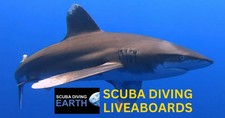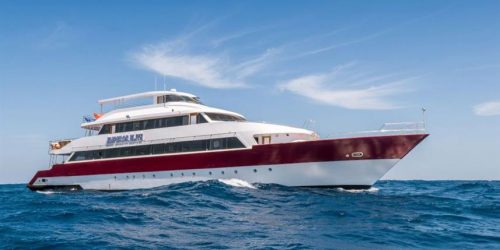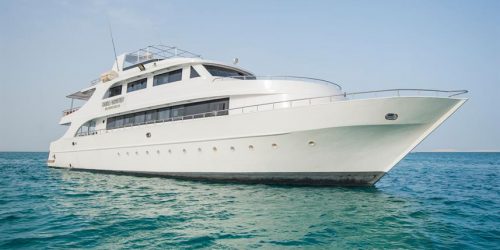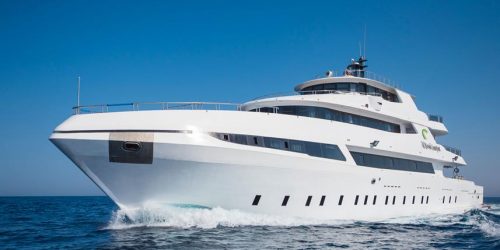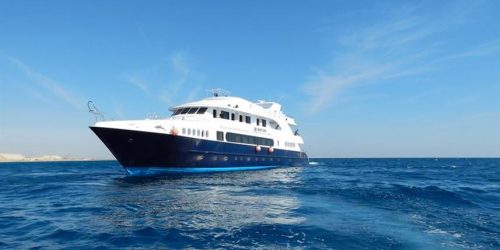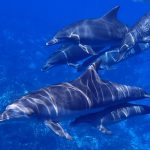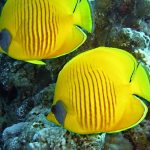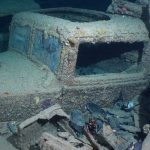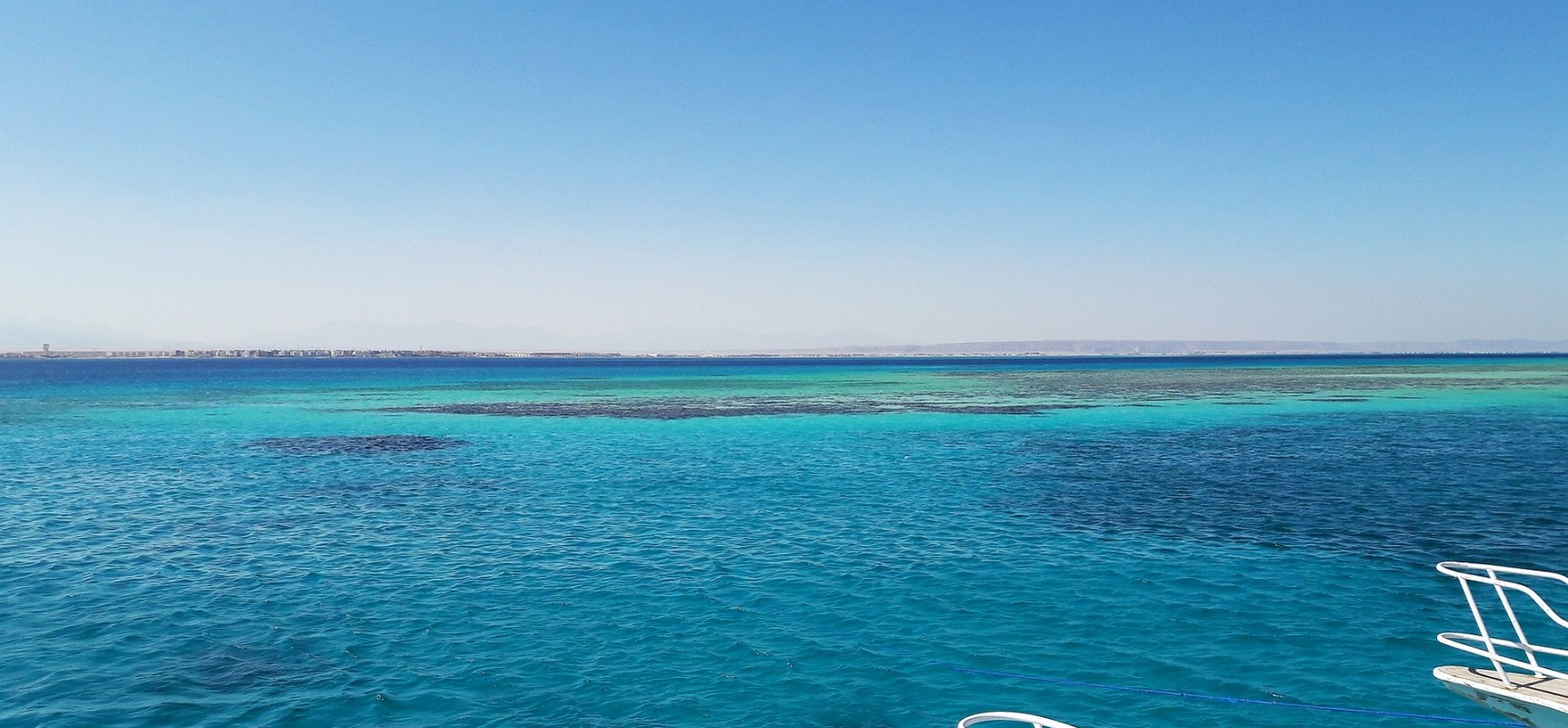
Egypt Liveaboard Diving
Liveaboard Diving Elphinstone, The Brothers And Daedalus Shark Triangle, The Northern Wrecks, The South Reefs Of Fury Shoals, St. Johns And Abu Nuhas
Top Egypt Liveaboard Locations
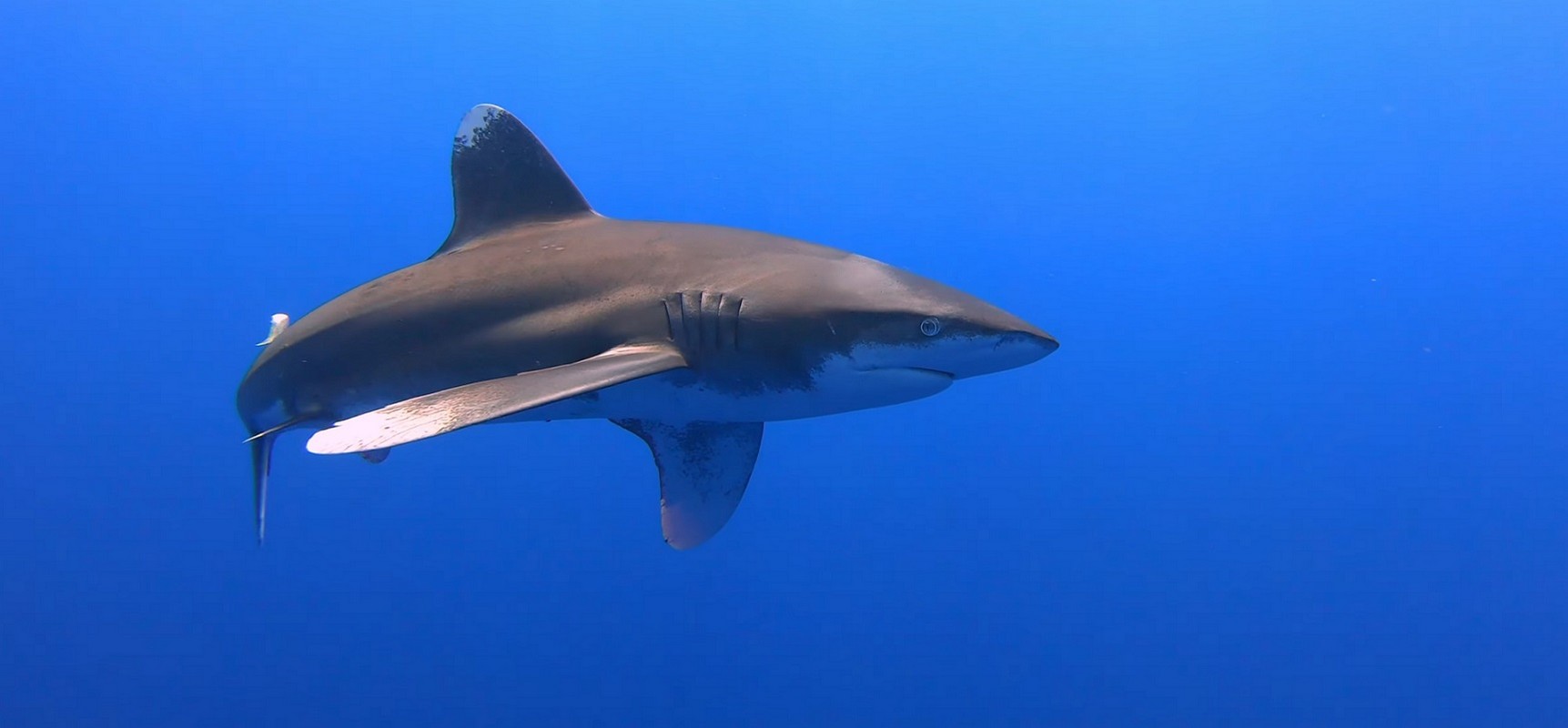
Elphinstone Liveaboards
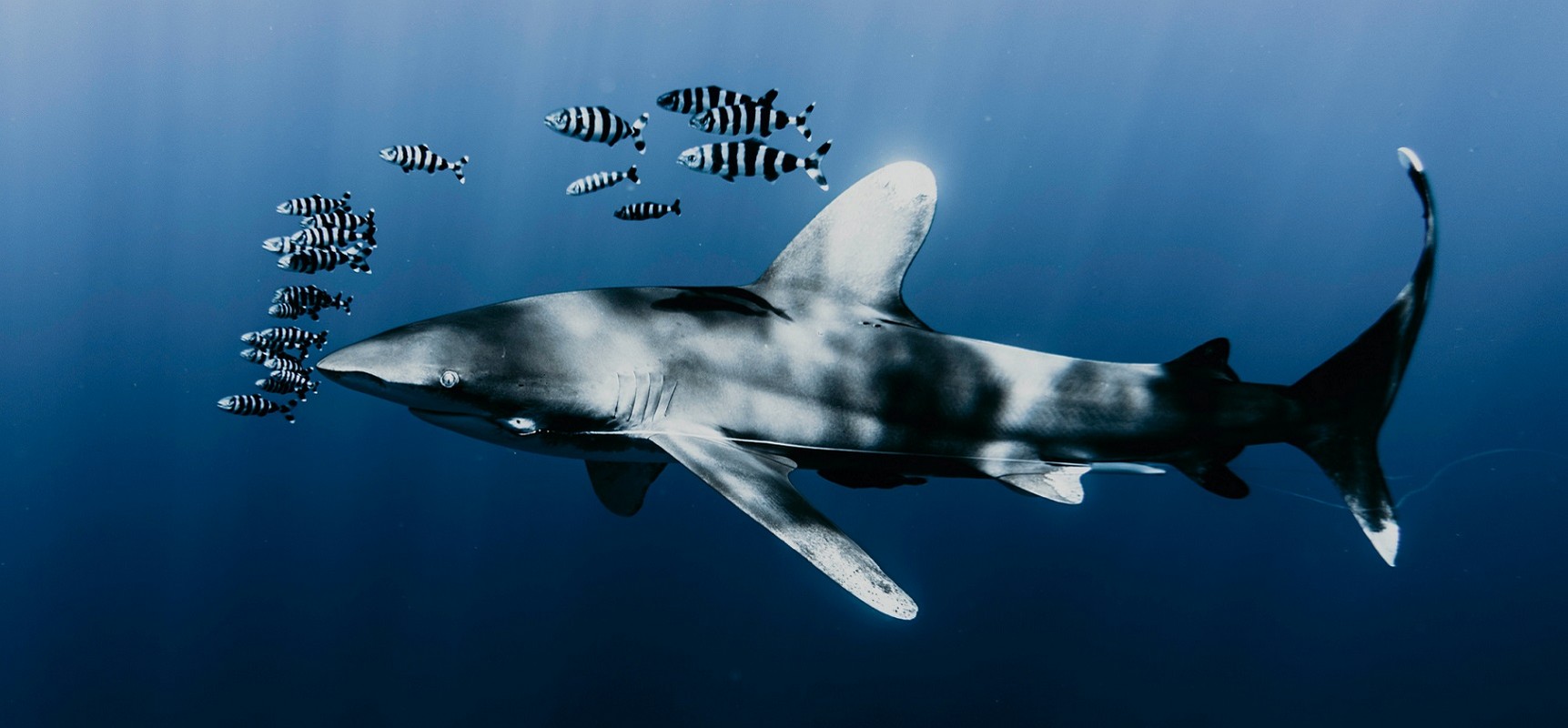
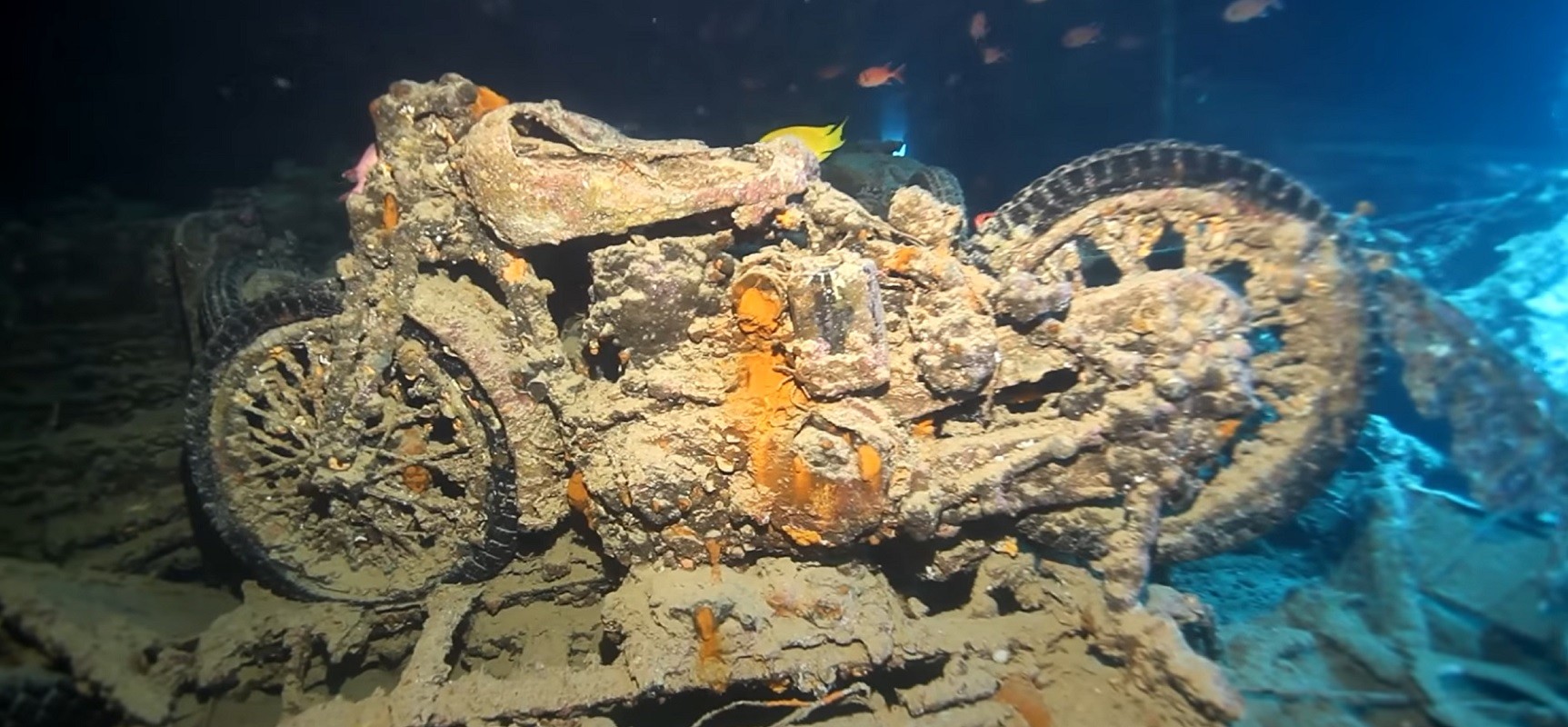
SS Thistlegorm Liveaboards
Popular Egypt Liveaboards
| MY Emperor Elite; Liveaboard diving in Egypt; 9.2 out of 10 and is rated 'Superb'; from £108, $132, €123/day. Customer Review: “Better than a 5 star hotel. There were highlights for each dive, but being on scuba with a pod of 14+ dolphins around us for almost 10 minutes was incredible. Diving the Thistlegorm has been a goal ever since I started diving 18 years ago, and being able to dive it 3 times, one after the other was truly a wonderful experience. Our guides and boat went to great efforts to ensure that the sites we visited were easy to dive without there being the need to swim too far or be overwhelmed by other diving tours – Most of the time we felt like we were the nylon divers there, and the Red Sea belonged to us. We will definitely be back!” Recommended for: The crew were always friendly, helpful and willing to assist with anything and everything to do with our stay on board as well the diving experience, whether it was gearing up, gearing down for diving, or waiting for you with a warm drink after a cool night dive. We always felt welcome on-board. The dive guides were incredibly knowledgeable about each site we visited, and always acted with our best interests in mind, ensuring both our enjoyment and safety. The meals on board are just out of this world. |
| MY Discovery II (Samira); Liveaboard diving in Egypt; 8.7 out of 10 and is rated 'Fabulous'; from £82, $100, €93/day. Customer Review: ”Very enjoyable Red Sea Safari. Food on-board was very good, excellent dive guides prioritised safety and generally were very helpful and considerate throughout. Boat overall was comfortable and had a lovely relaxed feel all week. The only minor criticism I can make is they have no library on board apart from fish ID books – so take plenty of reading, and the seating on the open deck was not very comfortable for me. Overall a very enjoyable trip and I we will certainly be booking onto a Discovery liveaboard again.” Recommended for: Diverse guest group, relaxed atmosphere, good diving. |
| MY Sea Serpent Grand; Liveaboard diving in Egypt; 9.1 out of 10 and is rated 'Superb'; from £135, $165, €154/day. Customer Review: “Excellent boat but dive sites not respected. A 20 min dive with 2 tiger sharks + 1 longimanus + 1 silky. AWESOME. the dive of the century!!!!!. It was supposed to be a rocky/zabargad/st John’s trip. Why going to daedalus and not rocky/zabargad???? Unthinkable…..” Recommended for: Diving time long. Food. Saloon. |
| MY Tillis; Liveaboard diving in Egypt; 8.9 out of 10 and is rated 'Fabulous'; from £82, $100, €93/day. Customer Review: “Fantastic week ,great crew. 8 wrecks .6 different sharks spotted including Hammerhead and Whale shark. Crew spot on always helpful and the Captain and the dive guide put us in the right place at the right time. Owner met us on the boat and put us in singles cabins where possible because the boat wasn’t full that week. Really great week. Loved it.” Recommended for: Dive guide was spot on ,crew were always on the ball and Seeing a Whale shark just made the whole trip. |
| MY JP Marine; Liveaboard diving in Egypt; 8.7 out of 10 and is rated 'Fabulous'; from £81, $99, €92/day. Customer Review: “Fantastic, food, tank filling (250), crew, Dive sites, and Dive Guides even Fantasticer friendly & flexible with safety always in mind. Caves & gullies. White tip reef shark. Nidibranches. Tuna cleaning station. Snorkel with dolfins. Multitude of reef fish and intact corals.” Recommended for: Trouble shooting guides! Clear briefings ( also a plan B). Multinational friendly fellow divers. |
| MV Ghazala Explorer; Liveaboard diving in Egypt; 0 out of 10 and is not rated; from £97, $118, €111/day. Customer Review: |
TO SEE ALL RED SEA LIVEABOARDS SCROLL TO THE TABLE BELOW
Liveaboard Diving in Egypt
Egypt liveaboard diving is affordable for budget conscious divers and about crystal clear waters of the Red Sea to dive the northern wrecks and Ras Mohammed, or the shark triangle of Elphinstone Reef, The Brothers and Daedalus Reef, or the southern reefs of Fury Shoals, St. John’s and Abu Nuhas.
Liveaboard diving in the Egyptian Red Sea is spectacular and a stark contrast to the dry barren lands that surround it.
Whilst many people know Egypt for the pyramids and the Pharaohs, not everyone knows about how the Red Sea is a mecca for scuba divers and snorkellers. From great ship wrecks to explore to amazing colourful corals; and from many small fish and critters to large fish and many sharks; Egypt’s Red Sea has it all.
You can enjoy dive sites like Elphinstone Reef, World War II Thistlegorm Wreck, The Brothers, Daedalus Reef, St. Johns, Ras Mohammed Marine Reserve and Abu Nuhas. With The Brothers and St. John only reachable by dive liveaboards.
The many Red Sea dive liveaboards offer a variety of itineraries to choose from and most depart from either Sharm el Sheikh, Hurghada or Port Ghalib.
If you want to dive The Brothers you can choose from one of the many Red Sea Liveaboards that depart from either Hurghada or Port Ghalib. The Brothers is known for sharks that include hammerhead sharks, oceanic whitetip sharks and reef sharks. But The Brothers is also well known for some amazing anthias and the colourful coral reefs.
Often times when you dive The Brothers, you will also dive on Daedalus and Elphinstone too. Elphinstone Reef has a strong current that hits the reef on its southern tip. It is at this location where the best diving can be found, where divers drop down to around 30-35 metres (99-115 feet) to a plateau to watch sharks, before peeling off to float in the drifting current along either the west or east side of the reef.
Elphinstone Reef is also famous for being one of the few places on Earth where you can dive with the oceanic whitetip shark, as well as hammerhead sharks. With the The best time to see oceanic whitetip sharks (also called Longimanus) from October to December.
If you are lucky, you may also spot thresher sharks, manta rays and even tiger sharks at Elphinstone reef too, together with turtles and dolphins.
On some liveaboard dive safaris you will stop at Marsa Alam, where dugongs can be sighted if you are very lucky.
Table of Egypt Liveaboards
This list of Egypt liveaboards is in descending customer rating order, so the liveaboards with the highest customer rating will be at the top of the list. To filter this table for the features that are important for your Egypt liveaboard trip, select from the list of filters below.
| Discover Liveaboard | Customer Reviews | Price Per Day | |
|---|---|---|---|
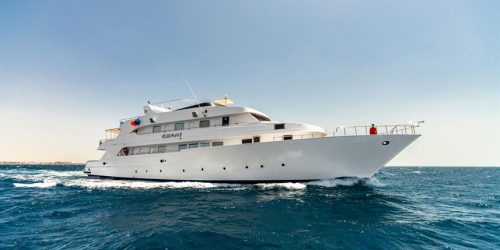 | Review: MV Ghani; Book: MV Ghani | 10 Exceptional | from £97; $118; €111 |
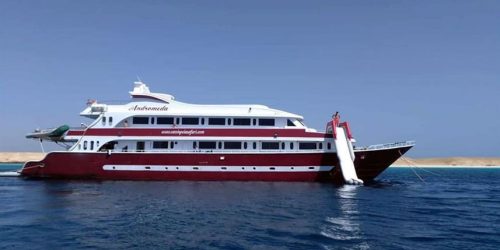 | Review: MV Andromeda; Book: MV Andromeda | 10 Not rated | from £89; $109; €101 |
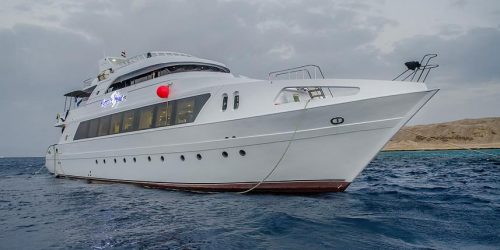 | Review: MY Hammerhead I; Book: MY Hammerhead I | 10 Exceptional | from £86; $105; €98 |
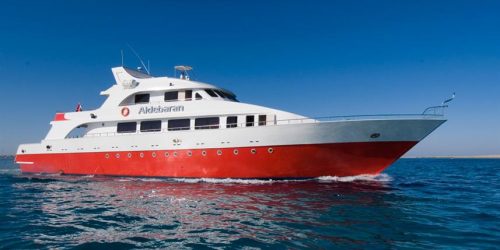 | Review: MY Aldebaran; Book: MY Aldebaran | 9.6 Exceptional | from £103; $126; €117 |
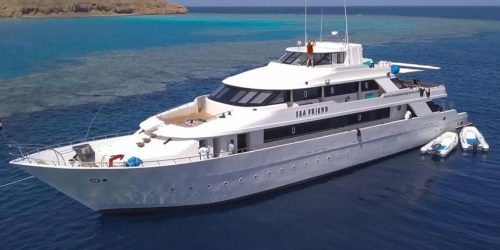 | Review: MY Sea Friend; Book: MY Sea Friend | 9.6 Exceptional | from £72; $88; €82 |
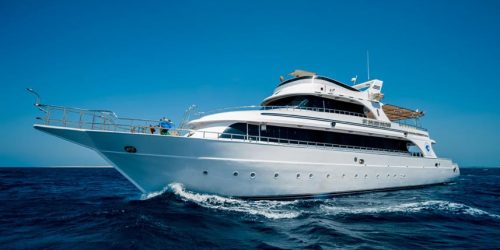 | Review: MY Golden Dolphin; Book: MY Golden Dolphin | 9.5 Exceptional | from £97; $118; €111 |
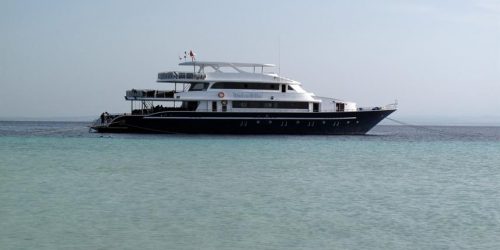 | Review: MV Dolce Vita; Book: MV Dolce Vita | 9.5 Exceptional | from £120; $146; €137 |
Note: The above “Price Per Day” was correct at the time of producing this article, as was the exchange rate used to convert the GBP cost to US Dollars and Euros. For an up-to-date cost for your chosen liveaboard, please visit the “Book” link above.
Dive Sites and Areas of Egypt and the Red Sea
Elphinstone Reef Diving
Elphinstone reef is found near Marsa Alam, and is about 400 meter (1,312 feet) long. Only the middle section of the reef is barely visible from the surface and is one of the world’s most exciting diving destinations. Elphinstone Reef was named after Admiral George Elphinstone, who was a 19th-century British naval commander.
There are just a few small breakers that are a visible sign of the reef that is just below the surface, which is the summit of a subterranean mountain. This mountain is rich in colourful corals and fish species, and attracts hungry predators including barracuda, dolphins and sharks, which includes oceanic whitetip sharks and hammerhead sharks.
But to dive Elphinstone Reef you need to be an experienced advanced diver, which is not ncessarily because of the sharks, but is due to the reef’s location in the open-sea, the dangerously deep coral plateau the infamous and constantly changing currents.
The Brothers Diving
The Brother Islands are two small islands in the middle of the Red Sea, and can only be dived from an Egypt Red Sea dive liveaboard. The islands are Big Brother and Small Brother, which are about 1 mile apart.
The Brothers, or Al Akhawian in Arabic, lie almost directly east of El Quesir. The two islands are surrounded entirely by blue seas (or the Red Sea), but it’s the lighthouse that first comes into view as you approach these islands. The lighthouse was built by the British in the 19th century, and is the only indication that man has made it thus far.
Big Brother is not just about the reefs and sharks, as there are two wrecks found there too, which are the Aida and Numidia.
The Aida sank towards the north west tip of Big Brother, which was overwhelmed by the waves whilst attempting to deliver goods to the lighthouse. Now sitting a 30 metres (99 feet).
The Numidia is hanging over the precipice edge of the northern tip of Big Brother Island at around 90 metres (295 feet), which smashed into Big Brother in 1901. Numidia is a spectacular wreck dive at any hour of the day, but is for technical deep divers only.
Little Brother island sits about 1 mile from Big Brother and is home to pristine reefs and home to giant gorgonian sea fans.
What is noticeable about the Brothers is the currents that move down the Red Sea. These currents carry vast amounts of rich nutrients to the islands, which is why there is such an abundance of marine life.
Daedalus Reef Diving
Daedalus Reef is an amazing dive site that is roughly 90 kilometres (56 miles) southwest of Marsa Alam. Daedalus is only accessible by liveaboard boats due to its remote location. Daedalus is less than a kilometre wide and marked by a lighthouse.
Daedalus Reef has marine park status, which means its reefs are in pristine condition and is one of the best loved scuba dives in the Red Sea. Known for spotting many schooling hammerhead sharks, silky sharks and oceanic whitetip sharks. But then you may also be lucky to spot manta rays, trevally and tuna too.
Diving at the north point of Daedalus is the toughest, as there are strong currents that hit the reef and split here. But similar to Elphinstone, it is where the currents are where you find pelagics and sharks. You can almost guarantee to see some predator action by finding an eddy in the currents, hide out and wait.
Fury Shoals Diving
Fury shoals is located in Southern Egypt and is best reached by a Egypt liveaboard boat from Marsa Alam. This dive site has some of the most pristine reefs in the Red Sea. There are both hard and soft corals, which are unspoiled due to their remoteness and can be found at one of many dive sites such as the Fury Shoal Garden.
The marine life at Fury Shoals is great with all the usual reef fish of the Red Sea to see. You will also likely see various species including whitetip sharks, grey reef sharks, and sometimes the curious oceanic whitetip shark too. Many pelagic fishes can also be seen including barracudas, giant trevallies and dogtooth tuna.
Dolphin Reef – Shaab Sataya, which is found at Fury Shoals is a great dive best known for the dolphins. But there are also plenty of fish including juvenile golden trevally, goat fish, parrotfish, tuna and eagle ray.
St. Johns Reef Diving
St. Johns reefs are not far from the Sudanese border and can only be reached by Red Sea liveaboard. The St. Johns reefs cover an area of more than 290 square kilometres. St. Johns is where you’ll enjoy diving with large shoals of fish, turtles, dolphins and sharks.
St. Johns Reefs include:
- Paradise Reef, which is a forest of coral pinnacles to swim around with swim-throughs and caverns;
- Habili Ali reef, which is a small oval shaped reef and plateaus between 3-7 metres (10-23 feet) from the surface and has fairly steep sided walls;
- Habili Gaffar, which is a beautiful pinnacle dive that reach to within 5-6 metres (16-20 feet) from the surface, but drops to over 60 metres (197 feet) to the bottom. It is here where you might see white tip sharks.
Abu Nuhas Diving
Abu Nuhas, which is also known as Shaab Abu Nuhas reef, is in the Shadwan Channel and just off the northern coast of Shadwan Island. If you love wreck diving, you will find 5 shipwrecks at Abu Nuhas, which include:
- The Giannis D, a 100 metre (328 feet) general cargo vessel built in Japan;
- The British built Carnatic is one of the oldest wrecks in the Red Sea and is many scuba divers favourite at Abu Nuhas;
- The Chrisoula K was a 98 meter (322 feet) Greek registered freighter that sank on 31 August 1981 when laden with floor tiles;
- The Kimon M was a 120m German cargo vessel that sank on 12 December 1978 when laden with lentils. She is the deepest of the Red Sea wrecks, but within recreational scuba diving depths. Its stern lies on the seabed at 32 metres (105 feet), and its bow is at 15 metres (49 feet).
- The Seastar lies in 90 metres (295 feet) of water, and as a result is not frequently dived, and certainly not by recreational divers.
Ras Mohammed Marine Reserve Diving
Ras Mohammed Marine Reserve is an underwater national park at the southern end of the Sinai Peninsula, and is near Sharm el Sheikh. This area is protected and commercial fishing is prohibited. This means that the reefs are pristine and untouched.
Other Egypt Diving
Straits of Tiran are located in northern Egypt at the beginning of the Gulf of Aqaba. This is revered as one of the best dive areas in Egypt. The Straits of Tiran include 4 amazing dive sites, which are Jackson Reef, Woodhouse Reef, Thomas Reef, and Gordon Reef. A diving trip on a liveaboard to the Straits of Tiran is very special.
Salem Express wreck was a passenger ferry that sank when it was caught in a storm on the 17th of December, 1991. She was in transit from Mecca when the bow was breached, and the vessel sank so quickly that many passengers were unable to escape in time.
Best Time to go to Egypt to Dive the Red Sea
The best time to dive in Egypt’s Red Sea is all year-round. The dive depths ranging from 5 meters (16 feet) to deep dives for technical divers.
The visibility is generally good and ranges from 15 meters (49 feet) to 70 meters (230 feet). But in certain areas many of the dive sites you need to be aware of the currents, which could make great drift dives, but make sure you have the relevant experience and certification for this type of diving.
The water temperature in Egypt’s Red Sea ranges from 21-30°C (70-104°F).
I hope you enjoyed this page about Egypt liveaboard diving
I’d love to hear from you. Tell us about your adventures of diving and snorkeling, in the comments below. Please also share your photos. Either from your underwater cameras or videos from your waterproof Gopro’s!
If this article hasn’t answered all of your questions. If you have more questions either about snorkeling or scuba diving (or specifically about Egypt liveaboard diving), please comment below with your questions.
There will also be many more articles about scuba diving (and snorkeling) for you to read and learn about these fabulous sports.
Have fun and be safe!
Select Another Liveaboard Location
| All Liveaboard Locations |
| Discreet Liveaboard Locations |
